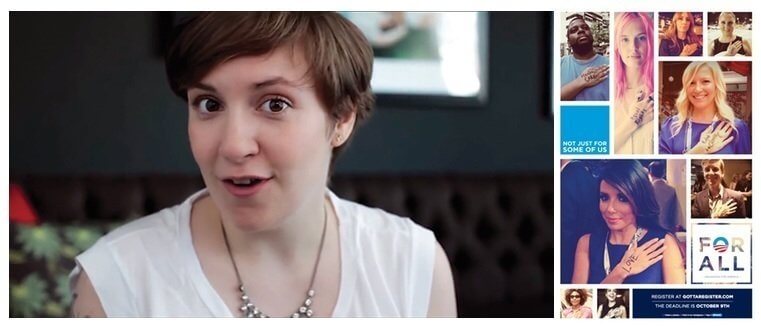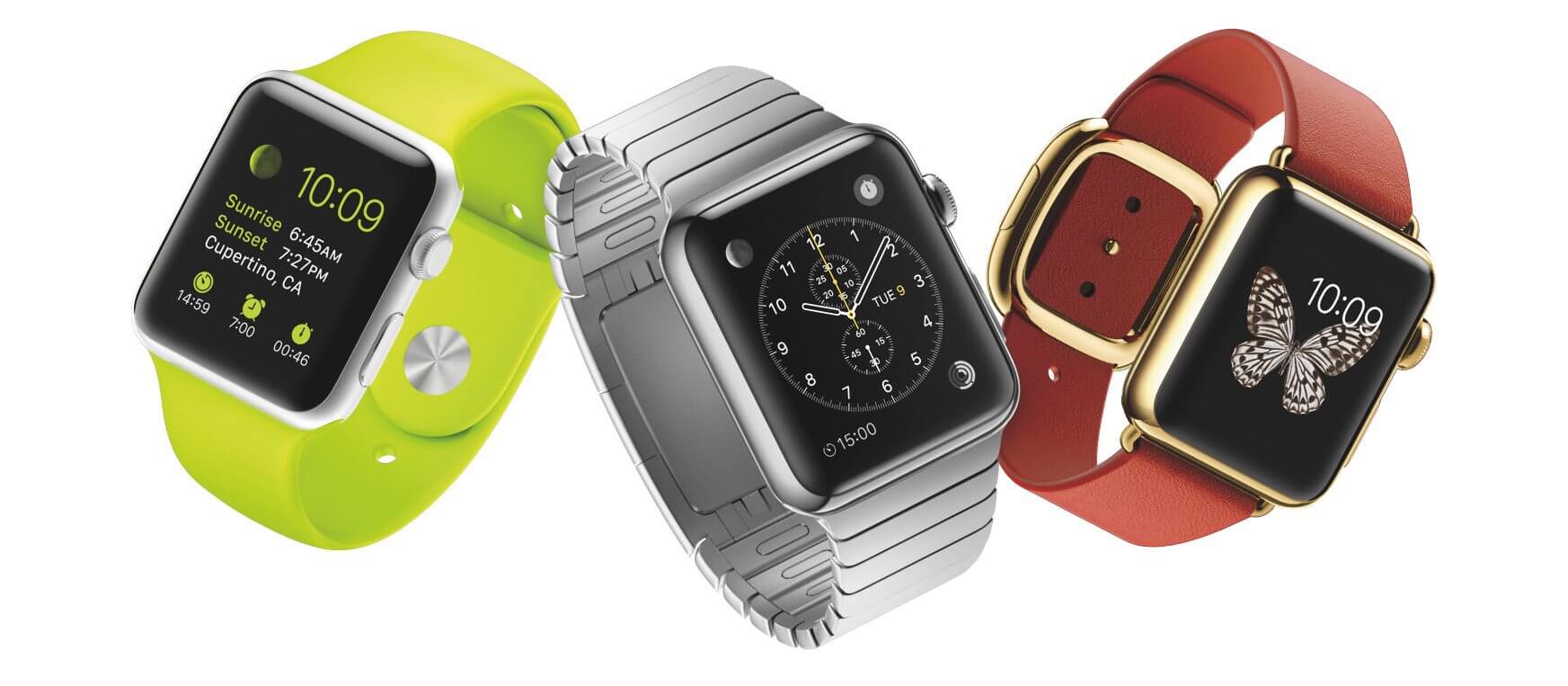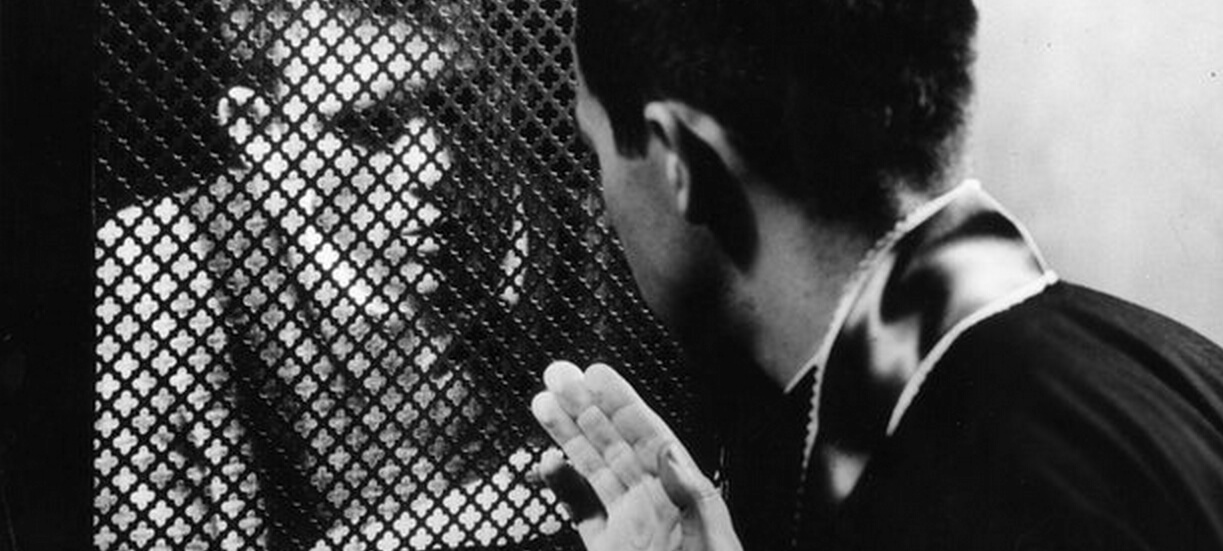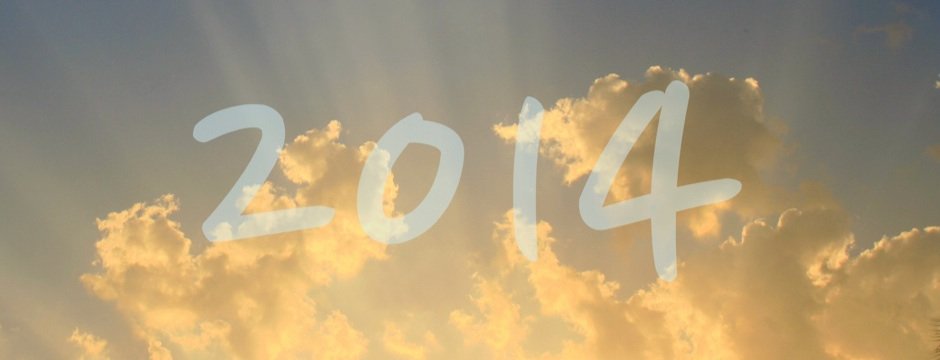Jan10Observations
Preventing Digital Memory Loss

My first piece on TechCrunch is all about how to take back control of your digital memories before it’s too late. An enterprising reader also recorded a reading to an interesting new podcasting for articles platform Umano. Have a read (or listen) and share your thoughts.
Read on TechCrunch | Listen on Umano
TopOct11Observations
10 Lessons on design and making things I learned at Brooklyn Beta

The 10 most important lessons I learned at this year’s Brooklyn Beta conference about design, business, and technology when it comes to making stuff:
More
- Giving people just what they need, when they need it, and not more, is fundamental to the user experience. Tavi Gevinson publishes only three new stories per day on Rookie magazine, timed to ‘After School’, ‘Dinner Time’, and ‘Sweet Dreams’. Her teen readers know new content will appear just when they need it, and in manageable doses.
- Creators innovate on ways to provide value, as well as how to make money from their ideas. Over time Tavi has grown Rookie into a triple thread with an annual published book for sale, as well as an physical event series. They all work together to deliver Rookie’s promise.
- If you can’t win the game, change the game you’re playing. When David Hieatt realized his small town denim factory couldn’t win in the market for denim jeans competing for the best price, he started over as a brand focused on quality and innovation at a premium.
- Purpose makes your company stronger, makes people believe in you, and want to support you. People believe in Hiut Denim Co. because Hiut’s mission is to bring jobs back its town and enable its craftsman community to put their wealth of skill and knowledge to work.
- Be an ideas company that applies ideas to a your business platform of choice. Hiut is an ideas company that makes denim jeans. They constantly innovate on the product, the experience, and the story of their denim jeans. Ideas are what can have a multiplier effect.
- Limitations can give your product direction and distinction. While a majority of the jean market is for pre-washed jeans, Hiut couldn’t offer this because of the impact on the town’s water supply. Instead, Hiutcreated the “no-wash jeans” club and embraced the uniqueness of jeans that have creases from the wearer’s life instead of a machine.
- Consider the impact your decisions will have on our culture for the long term. Getting wrapped up in the Internet party and not thinking about the clean up after is destroying our heritage. Jason Scott said 40% of URLs they index at Internet Archive are gone. Everything important about us is on the shakiest foundation since the dawn of time.
- Be honest with yourself about whether you’re achieving your goals.Brooklyn Beta co-founder Cameron Koczon rated their conference a C+ despite a 5 year run and thousands of passionate happy attendees because he felt it became too design focused and didn’t help bridge the gap between design and development + business they intended.
- You can choreograph empathy and creativity by paying close attention to the details. Brooklyn Beta succeeded as an un-conference because the organizers perfectly choreographed the experience. Things like no announced schedules, no Internet, DIY creator stations, ample conversation breaks, and unlimited coffee + beer set the pace.
- Do the stuff that matters to you the most. Have big, audacious, scary dreams. It’s not the job of dreams to be realistic, it’s the job of dreams to be damn near impossible. If you work hard enough, you might achieve a jean company that employs a town, a magazine for a new generation, or a conference that inspires and changes people’s lives.
This article was first published by Kevin Skobac on Medium.
Less
Oct07Observations
Rob Shepardson Talks Millennials and Politics

AdWeek spoke to SS+K’s Rob Shepardson about engaging millennials in politics, and our experience as President Obama’s youth agency during the 2012 re-election campaign:
Because young adults view Washington as “a cesspool,” creative agency SS+K was determined to “sell a politician by not being political,” notes Rob Shepardson, the shop’s co-founder and partner. “They knew Obama, liked him as a person, but were disappointed with the economy and generally alienated from politics,” he recalls. “There was an enthusiasm gap. Our job was to create that enthusiasm.”
“Millennials will align with somebody regardless of political labels based on values. Communicate through issues, not through the candidate. Negative ads and politics-as-usual can turn millennials off. They are quite shrewd when it comes to marketing. You need to get to a point or a benefit that matters to them. We had to be very careful not to make one false move and fall back into the traditional way of marketing.”
Find the whole AdWeek article here.
TopSep12Observations
With Apple Watch, Don’t Be Afraid To Dream Big

On Tuesday Apple finally unveiled the Apple Watch, ending years of rumors and seemingly insurmountable hype. The reviews have been mixed, at best. There are critiques about the design, critiques about the interface, critiques about the feature set. But mostly people are just saying “why would I ever need a watch when I already have a phone? What could it possibly do better?”
More
The ‘Why’ is what’s important.
The challenge of new technology is to overcome the obvious and enable the unprecedented. It’s easy to fall into the trap of thinking a device has failed just because it can’t do what we already do, any better than we already do it. It’s much harder to think about what a new device, especially one with such unique features as the Apple Watch, is capable of enabling in our lives.
This is precisely the same question we’re pursuing with Google Glass.
If you put on Google Glass and simply take a picture, do a search, or even play a game, you might feel like you are wearing an overpriced Halloween costume. When it comes to reproducing existing behaviors Google Glass often feels inferior, clunky, even infuriating. For that reason, over two years after Google Glass was first announced, it’s considered by many to be a dud.
But when you begin to think about what it could mean to augment people’s vision with the information they need, without taking up any additional human faculties, you look at Glass a little differently.
Recently SS+K partnered with Mark Morris Dance Group to build an application for Google Glass specifically tailored to augment the lives of people living with Parkinson’s disease. Taking advantage of Glass’s heads-up display, bone-inductive audio, and verbal and gestural navigation, we’ve discovered new tools that will give people living with Parkinson’s greater control and freedom in their lives. In a way that only Google Glass, and nothing before it, could make possible.
This is equally true of other Glass-based projects now underway. Remedy is a medical technology company building Glass software that enables physicians to lend their eyes to specialists for remote consultations. Quest Visual is making international travel easier than ever before with their application Word Lens that magically replaces the foreign language words you’re looking at with the proper translation, right before your eyes.
So when I look at the Apple Watch I’m not thinking about text messaging, Google searches, Facebook, or phone calls. I’m thinking about how the Apple Watch could be more consistently and more prominently connected to us than any mobile technology before it. How the underside of the watch face has a heart rate sensor. And how the watch body can generate varying degrees of haptic feedback to the wearer. I’m trying to think about the things that have never been before.
Writing off Apple Watch based on how it performs against today’s tasks is a fool’s errand. Instead, we need to look at Apple Watch as a new opportunity that we have the capability to make wonders with.
What’s possible is only limited by our imagination.
This article was first published by Kevin Skobac on Medium.
Less
Sep10Observations
Are Anonymous Apps The New Confessional?

I was recently interviewed for the Adweek article, “Anonymous Apps Like Whisper and Secret Have A Dark Side — Abusive Language and Bullying Have Brands Proceeding With Caution” My rant was longer than what appeared in the pub, so I’ve posted the other questions and answers here. I’d love to know your thoughts on this one since it’s a fairly polarizing topic. Please feel free to comment.
More
1. In general, what’s your view of apps and services that allow people some level of anonymity when they communicate?
First, I should tell you that I have 13 year old boy/girl twins so I’m acutely aware of these apps and the risks associated with them. Chief among them is the potential for bullying. However, at the risk of coming across pollyanna, I prefer to see these apps as more liberating than dangerous (for everyone but my kids ;-). Of course, social media creates great opportunity for both good and evil. Apps and services that allow people anonymity demonstrate a shift among Millennials from hyper-curated profiles and content to real, authentic, and grittier musings that convey a sense of vulnerability. This audience wants to show the world fully formed online personas and narratives, replete with sad and happy thoughts, silly faces, and no make up selfies — a shift from the lopsided, ‘happy’, stylized narratives we’ve become accustomed to online. But, not everyone is ready to associate their names and faces with their raw and candid thoughts. It’s an evolution in social media (which always come with some risks) and apps like Whisper, Secret, Truth and Ask.fm are helping people move along the continuum.
2. Have any of your agency’s clients run campaigns in anonymous apps?
No.
3. If one of your clients wanted to appear in one, what guidance would you give? What are the pros and cons to consider?
As with every platform, we’d make sure our clients thoroughly understand how the app/service works, how people are interacting with it, the rules of engagement, dos and don’ts, an analysis of like-services, brands who are currently integrating with the platform, what if any opportunity exists for their brand, and the most effective way(s) to leverage their brand in the desired platform. We’d underscore the risks of insinuating a brand into one of these apps — especially at this embryonic stage in the lifecycle of this particular ecosystem. My guess is few if any corporate brands would go for this right now, but SS+K does significant advocacy work and these clients might consider a test and learn approach.
4. Perhaps Whisper, Secret, Ask.fm, etc. are great venues for some types of brands, but bad venues for others?
Correct. Brands with a high threshold for risk (e.g., media and entertainment, spirits) seem well-suited to test and learn their way into these services. Also, pro-social brands with broad permission structures, specifically geared towards advocacy could take advantage of important issues of the day being discussed anonymously on these platforms.
5. What advice would you give to a client that advertised in an anonymous app, and the next day a news story broke that a teen was bullied in that venue and committed suicide? What should the client do?
This is a tough question. It’s not just clients, but everyone should ask the logical questions about what better precautions can be instituted without impinging on freedom of speech. It’s a very significant issue for all of us. As I said above, social media creates great opportunity for both good and evil.
6. Is digital anonymity here to stay? Will the category grow? Do you think the risks — bullying, possible libel, etc. — are just the risks we have to take?
There’s a sense of liberation and freedom that comes with expressing your thoughts openly and honestly without judgement. As more people discover this they’ll contribute more and more often to these platforms. I think the category will grow if apps like Whisper, Secret and others continue to demonstrate a sincere respect for privacy, a path towards growth and a bridge towards marketing. The risk of bullying and possible libel have existed since the early days of social on virtually every platform. Being able to do it anonymously will certainly add velocity to these threads but my hope is that communities will continue to self police and extinguish these hateful rants with positive dialogue and a no tolerance policy that ensures there’s very little room for the behavior.
This article was first published by Brad Kay on Medium.
Less
May05Observations
On Digiday: It’s time for Instagram to evolve

At 200 million users, Instagram is the current heavyweight champion of social photo sharing. And while there may be communities with more members, few can likely lay claim to having affected amateur digital photography as much as Instagram has. Square photo formats and packages of stylistic filters are cost of entry today for any photo application, but Instagram is responsible for popularizing both.
The platform brought ease and beauty to mobile photography. Borders and filters enabled the lay person to share attractive photographs regardless of camera quality or skill. Square cropping added a comfortable familiarity to scanning hundreds of photos in the feed at a time.
These were all critical to the success of Instagram, and their impact can’t be overstated. But does their importance still stand?
More
Exploring Instagram today, most uses of borders feel amateurish (or antiquated) and most uses of Instagram’s filters feel harsh or overly dramatic. More and more people appear to be using neither, when originally it was both.
That is not to say stylistic enhancements to photos are dead. Filters haven’t necessarily gone away, but people’s habits and tastes appear to be evolving toward more subtle, more natural-feeling editing applications like VSCO CAM.
Square imagery, on the other hand, increasingly feels like an unnecessary conformity. More and more Instagram users are skirting the limitation by using applications like InstaSize and Squaready (which ad gutters to a rectangle image to make it square format) to maintain the purity of their wide or tall photographs. Mobile photographers are recognizing the square format can hurt the quality of a photograph, and the forced constraint is no longer necessarily driving creativity.
VSCO CAM only launched on Android in December, and already Google lists it as having between 1 and 5 million downloads. Instasize has been out on Android a bit longer, and Google lists it as having between 5 and 10 million downloads. Nearly 40 million public uses of photo tags #vscocam or #instasize combined appear in Instagram’s explore tab. And these are just two of the many popular apps being leveraged to expand the artistic possibilities of photos shared on Instagram.

Even more tellingly, brands like JCrew are using rectangle crops to stand out in a stream of squares.
It may be that maintaining a square window per photograph helps keep a clean browsing and consumption experience in the Instagram application. However, Instagram could still allow for users to post non-square images in the space without having to destroy the integrity of the original photo by adding artificial gutters.
Instagram has become the photography application of choice for millions of people. It doesn’t have to react to every trend, but it needs to recognize the progressions that it helped make possible. It needs to enable us to be the mobile photographers we’re now capable of being.
This opinion piece was originally published on Digiday, May 5th 2014.
Less
Feb24Observations
A Few Observations on the Year Ahead
 Only a fool makes predictions in the social space given its relentless change. Well, according to my 3 kids, I’m well qualified, so here are a few thoughts on how things may play out in the year ahead:
Only a fool makes predictions in the social space given its relentless change. Well, according to my 3 kids, I’m well qualified, so here are a few thoughts on how things may play out in the year ahead:
The Vanishing Point
The surge of Snapchat’s self-destructing messages, photos and captions ushered in the erasable Internet. We’re swimming in polished photos, curated social profiles, over-thought Tweets and precious Status Updates. Parents hound their kids with warnings that whatever they say on the Internet will come back to haunt them later on, when they’re up for a cabinet post or the condiments post at White Castle. Snapchat’s vanishing messages liberated this generation. This app is their ticket to spontaneously and authentically communicate free of worries about future consequence. That’s an enormous benefit, so expect lots more evaporating platforms and apps. Long-live short-lived social messaging!
Exposing More to Less
Newsflash: Everyone’s on Facebook. 1.23 billion of us log on at least once a month. So even if I am a fool, I’m not predicting Facebook’s failure. But we may see a large movement of people to private social networks like Path or nascent platforms like Google+ where they can reveal more of themselves to a more select group. It’s not that people will abandon Facebook, but that many of us will also seek out quieter, more personable online experience. Then, they can be more themselves to fewer people. But that photo of their dog’s new sweater vest? Facebook forever.
Jan03Observations
Four Progressions That Will Shape Internet + Technology Culture in 2014

As 2014 gets under way and we begin packing for the annual Consumer Electronics Show, its time to think about the advancements in internet and technology that could impact the way we all consume content and interact with each other. While we’re excited to see the latest in wearable technology, break-through high resolution TVs and connected electronics, the real game changers may not be device-specific at all. Instead, we’ll be thinking about the more subtle forces that could impact the future of marketing. Here are four progressions we see shaping internet + technology culture in 2014:
More
1. Public vs. Private Interaction
In its early days, popular mobile messaging app Snapchat was heralded as a way for teens to send racy photos outside of the watchful eye of parents. But, as the audience grows in to the tens of millions, Snapchat is being recognized for what it is— the necessary outgrowth of years of “public” being the dominant value on the social internet. Sure, Snapchat’s photo-first messaging strategy is quick and fun to use, but its the freedom of impermanence that really drives the service in a way that can only be such a relief after understanding the exhaustion of the opposite.
It’s become clear that the drive towards openness is a symptom of a persistent Facebook-guided social media culture that has its limits and its repercussions. For many, it’s become tiresome thinking through the necessary polish and potential ramifications of sharing each piece of life content. Snapchat’s disappearing messages offer a way out — a way to engage with friends and family without thinking it through very hard, like you might in person. If that’s something we’re all yearning to return to, then Snapchat is just the beginning of a new wave of platforms and products that offers an alternative to the public eye.
2. In-depth vs. Snackable Content
In a year where Buzzfeed more than tripled its size, it seemed as if every publisher was rushing to emulate the magic formula by turning every article into lists, slideshows, animated gifs and Upworthy-esque headlines. The result is a web culture that in some ways feels like its one giant tabloid magazine for the attention-challenged generation— big, bold, suggestive headlines paired with flashy imagery in place of real depth or context. The snackable content format fits perfectly with the rapid-fire news stream that Twitter and Facebook has established. But like the gif-column, the news feed is a ride consumers may be starting to feel differently about.
Just when it seemed blogging had been made extinct by 140 characters, new publishing platform Medium was conceived by the very same founder to provide a construct for people who want to write without distraction. Even more drastically, in December we saw the launch of The Information, a $400 / year online technology publication that promises just a few articles, on topics that deserve depth and dialogue. It may be time to start thinking differently about the content we create for consumers.
3. Open vs. Closed Infrastructure
The feature wars between Apple and Google, Facebook and Twitter, Instagram and Snapchat (etc.) have been well covered. But while everyone is focused on the land grab over a billion users messaging + photo + friend platform of choice, the bigger struggle developing may be over the destruction of the very fabric of the internet. The early days of social media were defined by openness— structures such as RSS feeds, open APIs and chat protocols. This early web infrastructure helped services grow and content spread in a collaborative, user-centric way that benefited all.
But in 2013 Google substituted its open Google Chat platform for its new proprietary Google+ Hangouts to compete with Apple iMessage, an equally closed messaging platform. Google also closed the RSS-powered Google Reader in hopes of making the silo’d Google+ the proprietary social news platform of choice instead of Facebook. Twitter notoriously reigned in its once public API to control its customer more tightly. The question is, will users be comfortable with these decisions as long as they are continually given new features, or will embracing the open internet begin to serve as a stand-out differentiator?
4. A La Carte vs. Bundled Video
Every time a cable network and broadcast company battled over carriage fees the cry for a la carte television becomes louder. The truth is a la carte is here, it’s just arriving through the back door of connected TVs and streaming video providers. In the last year, the arms race between Hulu, Amazon and Netflix has resulted in numerous water-cooler worthy original shows being created outside of the traditional broadcast model. The future is being defined by these new “channels”, libraries of archive + original content a consumers wants to pay for at ~$8 a pop.
Unfortunately each library of content is silo’d in independent application gardens. Connected video systems like Apple TV require viewers to jump in and out of each ecosystem instead of easily navigating all of a user’s subscribed content in one menu, and may not even support each 3rd party “channel” as a competitive practice. We are in the golden age of television content, but managing your television has never been more difficult. This must be solved now, because a la carte will really be tested if the traditional networks and premium video providers like HBO start to disaggregate from the cable bundle as well.
Less
Nov01News
Rob Shepardson on Bloomberg TV
SS+K partner Rob Shepardson was on Bloomberg TV this week speaking about challenges the White House is facing with healthcare and the NSA surveillance program:
White House Needs Results, Not Messages
Oct31Observations
Why Auto-Expanded Images + Vines on Twitter is Bad News

This week Twitter rolled out a major change to the tweet stream: auto-expanded photos and vines in users main feeds. Now instead of having to click to expand the Twitter card to view some rich media content, a 437×218 px thumbnail will be clearly visible directly below the respective linking tweet. The tweet stream change rolled out across web, iPhone and Android all at once.
While at first this might not seem like a big deal, auto-expanded content could have an immediately negative effect on user behavior:
1. Auto-expanded images break the democracy of content in your tweet stream.
Instead of scanning all content equally, users’ eyes won’t be able to avoid skipping to the next image. And instead of engaging with the most interesting content in their stream, users will be drawn to the most visually stimulating. With Twitter prioritizing rich media over text, conversation and link sharing no longer has equal standing. In other words, Twitter is on its way to becoming another Facebook or Instagram, instead of the maintaining its status as the world’s quickest and most robust news feed.
More
The effects of images in the tweet stream may not be immediately evident when everyone is just getting adjusted, but consider Facebook. While much has been made over the years of Twitter’s 140 character limit, the optimal post on Facebook is actually 80 characters or less. With Facebook’s emphasis on photo + video in the news feed, written text (even a minimal 140 characters text) can’t compete for attention. Is this what Twitter wants for its future?
The auto expanded images and videos are also accompanied by now immediately visible reply + retweet + favorite buttons. The buttons makes the tweet stream feel much busier and slower to scan than ever before. This is most notable on the desktop, where as many as twenty or more buttons in repeating rows of four now clutter the page above the fold.
2. Brands were just given a back door to banner advertising on the homepage.
Brands invest a great deal of time, energy and money in building communities on Twitter and communicating with their followers on a regular basis. Planning for auto-expanded images + vines will become an immediate best practice for brands that want to maximize message exposure and engagement. Many brands also have more human and capital resources to invest in creating imagery to accompany every post, which contributes to the uneven playing field in the tweet stream.
This reality will be even more apparent when brand tweets are paired with Twitter’s paid promoted tweets platform. Promoted tweets are published “above the fold” in the first few tweet placements. Promoting a tweet with an auto-expanded image will allow brands to serve up a prominent visual banner ad on the homepage of Twitter for the first time ever.
It’s important to note that while brands will (and should) take advantage of the new Twitter format, high quality + high value content will still be critically important. This is reinforced in two ways: users being able to easily unfollow brands that clutter their tweet stream with noise, and Twitter’s auction model that factors a brand’s quality score into the cost of advertising.
3. Two links and minimal text per post becomes the norm.
Since including images in posts will be required to attract viewers, images will now be included in posts even when the goal is to share a link to an article. This is immediately becoming the standard for publishers, who are pairing image links with article links to draw attention to their articles. Because Twitter requires 22 characters per link to wrap the link in their URL shortener, two links eats up 45 characters (including a space in-between) before any copy is even written.
It’s worth noting, as well, that the new auto-expanded images appears to break article preview Twitter cards. So when publishers pair images with their article links to maximize attention in the tweet stream, they’re prioritizing the new form of banner ad over the valuable content + context they were providing to their readers upfront, before the click.

4. Twitter images + Vine videos get preferential treatment.
Ever since Instagram pulled support for Twitter cards, images that were uploaded directly to Twitter have been more visible on the platform than photos shared from their competitor. However, while the Twitter cards imbalance was Instagram’s choice, the new auto-expanded images feature now gives Twitter’s own image format a distinct advantage over any other image hosting service.
Now users can expect to see plenty of Instagram photos (and images created using other tools) downloaded and re-uploaded natively directly to Twitter’s image platform. Popular API hacking tool IFTTT already has a recipe for automating the process of porting a photo from Instagram over to Twitter images. This will create fragmentation in engagement around the same content, duplicated across platforms.
This home court advantage will likely help boost Vine’s success, as well, which is critical as Instagram begins to roll out its own advertising format. Branded video on Instagram, with its :15 second time limit, is expected to be incredibly popular with advertisers looking to bring video spots to the 150 million strong Instagram audience. Auto-expanded vines paired with paid promoted tweets will be a powerful tool for Twitter to combat Instagram’s new offering.
With Twitter’s IPO just around the corner, auto-expanded Twitter images + vines may just be one of many big changes coming to the platform. For the health of the platform and its long term potential, Twitter must think through the impact all of its design decisions will have on user behavior. It also needs to evaluate clearly which values Twitter wants its platform to stand for. Choices like auto-expanded rich media may seem small at first, but they could do more to disrupt the democracy + dialogue the platform has been known for than any other changes Twitter has made to date.
Disclaimer: This opinion piece was initially posted on Kevin’s personal blog.
Less
